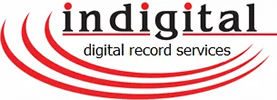Scanning business documents and creating a digital backup file system come with many advantages for your business. One of the main decisions you need to make with your scanned documents is what file format to use for your files. Along with PDF files and JPEG images, one of your options is a TIFF image file.
Used for years by professionals, TIFF files come with multiple benefits to consider for your company. Check out what some of the benefits are and why you should consider TIFF files the next time you use document backup services.
1. Meta Tagging
TIFF files have the benefit of detailed meta tagging features. As you attempt to retrieve documents, meta tagging can become an essential way to locate files. Meta tagging may include the day the file was uploaded, the date of birth for the person on the file, and the type of form. You could go even deeper with the metadata by including the name and address of a person.
When you need files, the meta tags are automatically built into the system, and search results can come back extremely quickly. If your business has multiple locations or works remotely, then TIFF files also feature GeoTiff, which includes detailed location information. For example, if you work in realty, then GeoTiff files can load all the files for a specific house location.
2. Lossless Compression
When converting files from paper to digital, you do not want to worry about a loss in quality. Photo formats like JPEG will compress files and often make them appear more pixelated. A TIFF file is a lossless compression. Your files will remain at a high resolution as long as the files remain in the TIFF format.
The lossless compression is ideal for photo-heavy file storage. In the medical world, you may have x-rays, injury photos, and other images you need to back up. A loss in quality could make it harder to properly view media content in the future.
Even if you compress TIFF files to reduce size, the quality remains. The original file scan will include a high-resolution format to ensure every detail is clearly seeable. The quality of the TIFF file has evolved over the years, and one of the current standards is the Group 4 TIFF files, which offer the highest amount of lossless quality.
You may have larger file sizes with Group 4 TIFF images, but cloud servers can expand to hold all the backup files you need so size is not a concern.
3. Color Options
TIFF files are compatible with many color formats in computers. You can keep things simple with a greyscale format or include full-color RGB for the scanned files. RGB is the standard for many colored graphics on computers and will provide the best range of colors for scanned files.
4. Security and Protection
Tiff files clearly include their data and subsets within the metadata. Image files like JPEG sometimes have a vulnerability where hackers can code malicious software right into an image file. If a person clicks the file, then malware downloads or data can infiltrate a computer and cause issues for users. TIFF files are less susceptible to malware.
While likely no malware threats would occur through the initial scanning process, you could still run into issues as people share or email photos through the company. However, TIFF files offer an extra layer of security and protection so you feel safe with your large amounts of backup storage.
For more information on TIFF files and our scanning services, contact us at Indigital. We will help you organize your office and can provide detailed metadata for all of your files. We offer digital TIFF documents along with other file formats to meet your needs.

